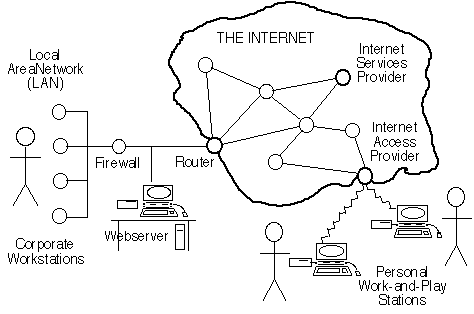Really complex network
A network comprises nodes (computers) and arcs (means whereby messages can be transmitted between the nodes)
fragility is compensated by redundancy
multiply-connected topology allow eventual robustness and resilience

A network comprises nodes (computers) and arcs (means whereby messages can be transmitted between the nodes). A network suffers from fragility if individual nodes are dependent on only a very few arcs or a very few other nodes. Networks are more reliable if they involve a large amount of redundancy, that is to say that they comprise many computers performing similar functions, connected by many different paths. The Internet features multiple connections among many nodes. Hence, when (not if) individual elements fail, the Internet's multiply-connected topology has the characteristics of robustness (the ability to continue to function despite adverse events), and resilience (the ability to be recovered quickly and cleanly after failure). The Internet also has the characteristic of scalability, that is to say that it supports the addition of nodes and arcs without interruptions, and thereby can expand rapidly without the serious growing pains that many other topologies and technologies suffer.
The conception of the Internet protocols
took place during the 1960s and 1970s, at the height of the Cold War era.
Military strategists were concerned about the potentially devastating impact
of neutron bomb explosions on electronic componentry, and consequently placed
great stress on robustness and resilience (or, to use terms of that period,
'survivability' and 'fail-soft'). These characteristics were not formal requirements
of the Internet, and the frequently-repeated claims that 'the Internet was
designed to withstand a neutron bomb' are not accurate. On the other hand,
those design characteristics were in the designers' minds at the time.
http://www.anu.edu.au/people/Roger.Clarke/II/OzI04.html